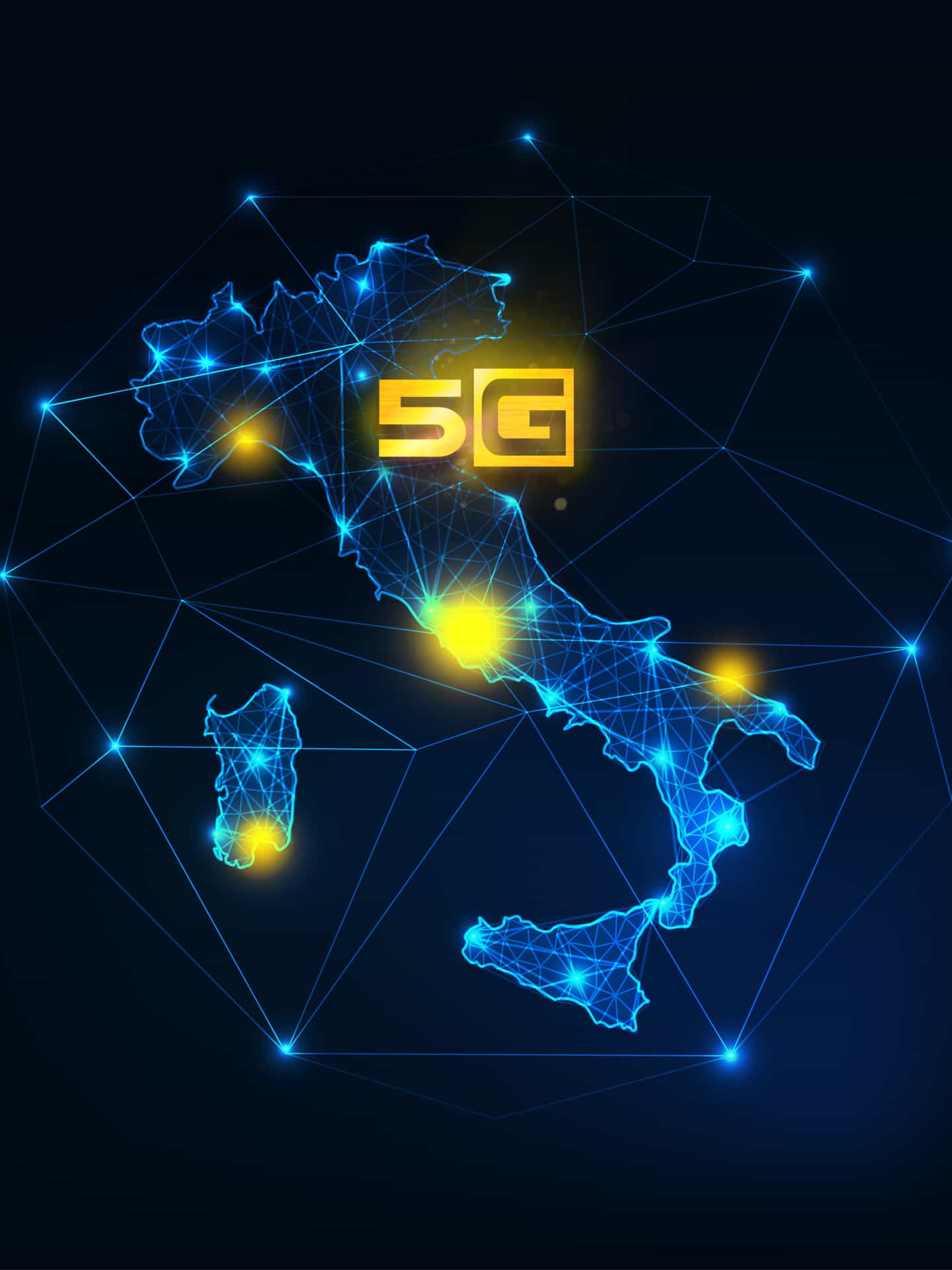Per riprendere la navigazione ti basterà cliccare su un punto qualsiasi dello schermo.
5th generation mobile networks - the so-called "5G networks" - are “converged” networks, in which the traditional difference between fixed and mobile networks tends to blur. These are very versatile networks that allow to offer very high-performance connectivity services both at home and on the move. Thanks to its characteristics, 5G is revolutionizing our lives and our way of experiencing cities as well as many industrial sectors thanks to the infinite applications that can be developed.

From the infrastructural point of view the main characteristic of 5G networks is the so-called "densification" of mobile radio antennas. The number of antennas, all entirely connected in fibre, is much higher than in traditional networks. Thanks to these characteristics, which make the 5G network similar to a large Wi-Fi network, performance reaches levels far superior to those of 3G and 4G networks and comparable to those of fixed networks.
Through 5G it’s possible to download all types of files very quickly, even large ones thanks to a download speed that can reach 3 Gigabits per second and transmission capacity levels up to 10 times higher than current 4G networks.
Through 5G the transmission of information in real time is easier thanks to the reduction in reaction times which go from 25-35 milliseconds of today's 4G networks to just a few milliseconds.
Thanks to 5G the possibility to simultaneously connect a very large number of objects that can go from a few thousand, with current 4G networks, to a few million devices per square kilometer is becoming a reality. Thanks to 5G, devices can be connected and interact with each other, a key feature to boost the development of the so-called "Internet of Things" in the near future.

Thanks to the characteristics described, 5G represents a fundamental enabler of the so-called "internet of things" (IoT): the new applications are having important impacts both on our daily lives, thanks to all the solutions for smart cities, home automation and healthcare sectors, Public safety, and in many sectors, from agriculture to Industry 4.0.
But in addition to the IoT and mobile applications, 5G networks are also producing a significant effect in the world of fixed telecommunications services. In fact, 5G represents the natural evolution of Fastweb's FTTN (Fiber to the Node) fixed fiber optic networks spreading throughout the country and will be the key to its development.
In fact, 5G is a technology that allows to bring connectivity to families without fiber connections to the home leaving the last section of the net that goes from the street closet to the homes to 5G coverage. Thanks to the “Fixed Wireless Access” network architecture, connections speed can reach up to 1 Gigabit per second with the advantage of giving further boost to the development of new networks which can thus be rolled out much more quickly.

Fastweb was the first company in Italy to experiment Ultra FWA networks to bring ultra-broadband connectivity and to obtain performances completely comparable to those of FTTH to families and offices. Currently, in the less infrastructured areas of the country, Fastweb Ultra 5G FWA network covers 1,000 Municipalities. With the aim of further accelerating coverage of digital divide areas with 5G FWA bringing connectivity of up to 1 Giga, Fastweb has also signed a strategic agreement with Eolo.

Furthermore, at the end of June 2019, Fastweb together with Wind Tre launched an important partnership for the joint development, leveraging the specific assets of the two operators, of a 5G mobile network throughout Italy with the aim of providing high performance mobile services to citizens and businesses and cover 90% of the population by 2026. The roll out of the 5G network shared between the two operators is underway and the infrastructure which includes both macro sites and micro-cells connected through Fastweb fiber optic currently covers today 74% of the Italian population.
Thanks to 5G, Fastweb is implementing a strategic paradigm change by evolving its networks towards FTTA, i.e. "fibre to the antenna" to quickly develop a high-performance 5G network starting from the main Italian cities.
Seleziona una città per scoprire le iniziative sviluppate grazie al 5G di Fastweb
In 2017, Fastweb, Ericsson and Roma Capitale signed a memorandum of understanding to start testing 5G and Wi Fi technologies for the development of new services. The first three areas of experimentation are tourism including digital applications to enhance cultural heritage, security including very high-definition remote surveillance, and urban mobility including automatic tracking applications, new pricing approach, on-board diagnostics telemetry and predictive fault analysis.
In 2019, the City of Genua, Fastweb and Ericsson signed a Memorandum of Understanding to start testing 5G and Wi Fi technologies for the development of new services. In the Porto Antico area, the applications concern Security with the development of innovative very high definition remote surveillance solutions, Tourism with the enhancement of the cultural and artistic heritage of Genua thanks to virtual reality and solutions for Smart City with applications for environmental monitoring and remote management of lighting systems. In particular, the Security applications realized in collaboration with Leonardo s.p.a enabled People Counting, i.e. the counting of people through virtual gates equipped with 5G connected cameras, and People Density, i.e. the detection of density, movements and parking of people in Piazzale Mandraccio for the monitoring of the events taking place within the area.

